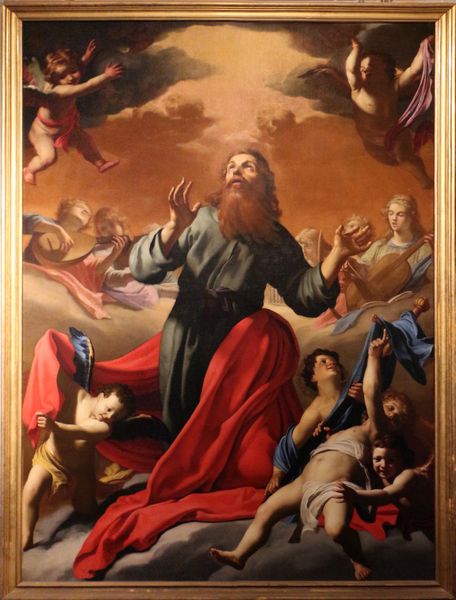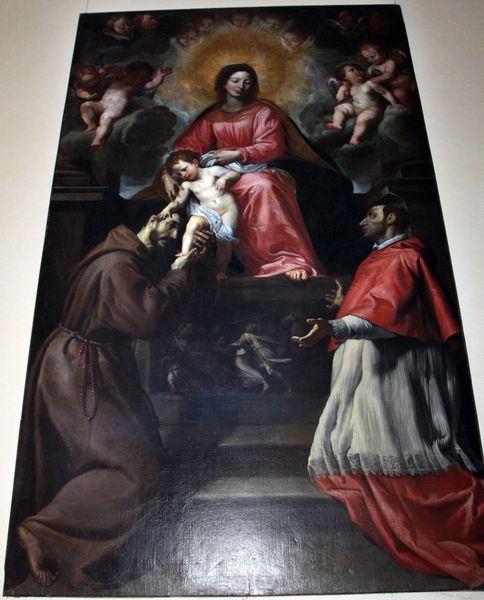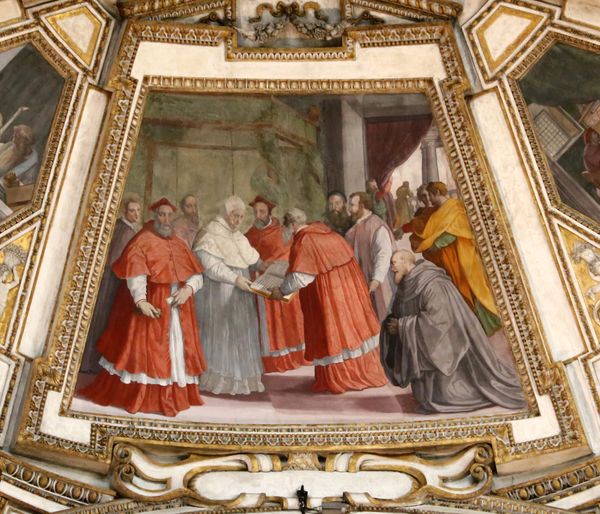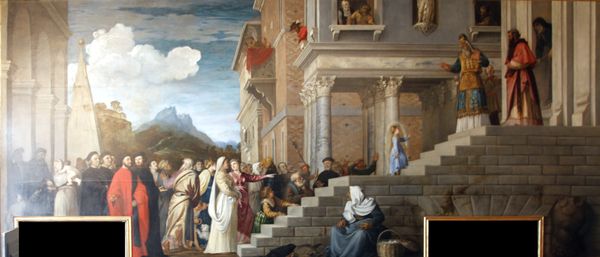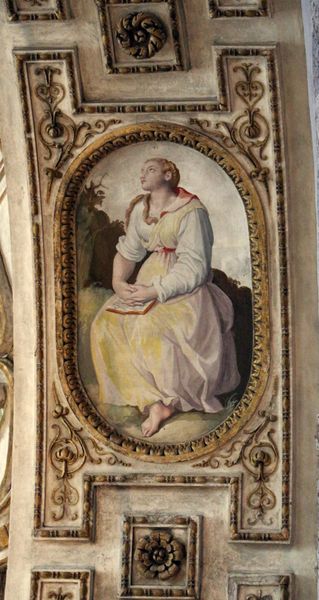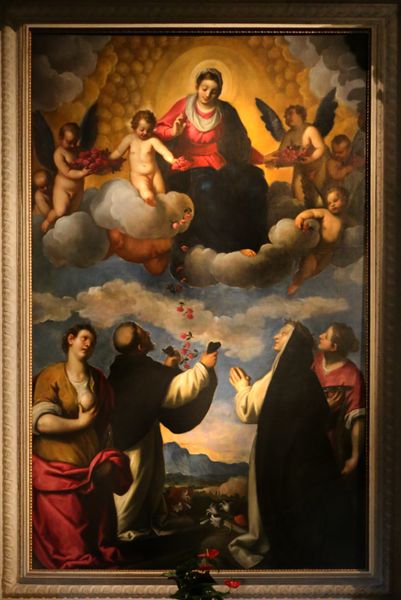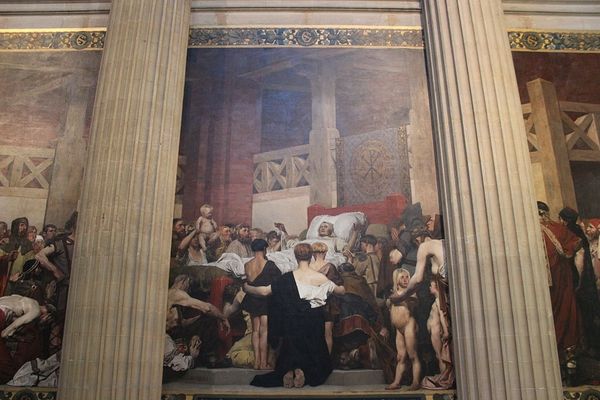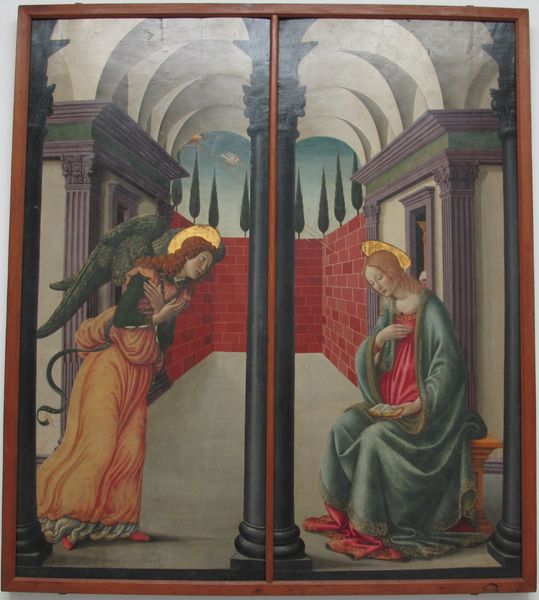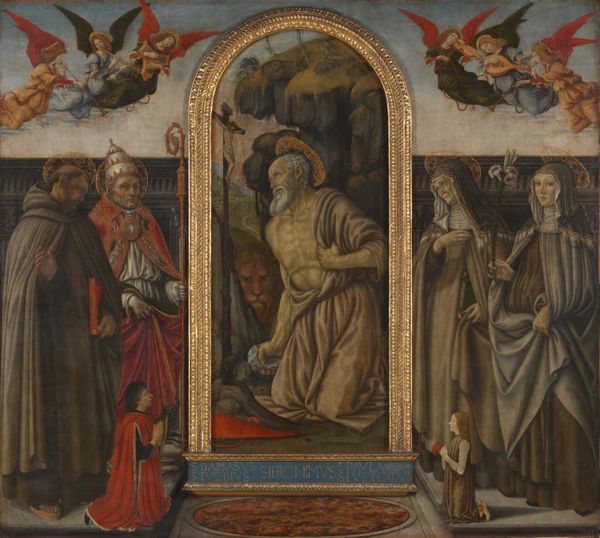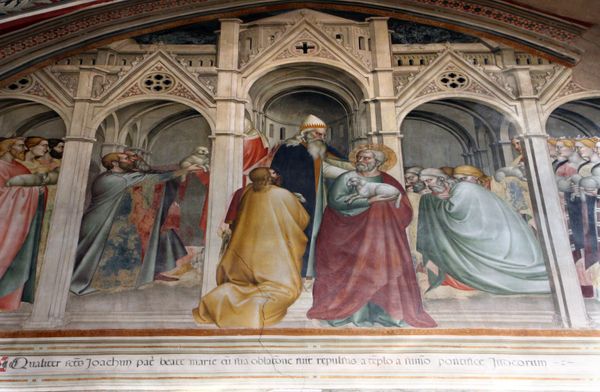
Saint Catherine of Siena receiving the stigmata between Saints Benedict and Jerome 1517
0:00
0:00
painting, oil-paint
#
high-renaissance
#
painting
#
oil-paint
#
figuration
#
history-painting
#
italian-renaissance
Copyright: Public domain
Editor: Here we have Domenico Beccafumi's oil painting, "Saint Catherine of Siena receiving the stigmata between Saints Benedict and Jerome," created in 1517. There's such an ethereal, almost dreamlike quality to the light. I'm curious about the materials Beccafumi used to create that effect. What stands out to you? Curator: Consider the layers of meaning embedded in this oil painting, going beyond the religious narrative. Observe the use of oil paint itself, a relatively new medium at the time. The very act of applying oil, layer upon layer, allowed for these gradations of light and shadow—consider how this technology enhanced the symbolic value the painter wanted to achieve. Editor: So you're saying the choice of oil paint was crucial to conveying a specific kind of sacred atmosphere? Curator: Precisely. The materiality speaks to the changing dynamics of art production. Earlier painters relied on fresco or tempera, demanding a more collaborative workshop model due to their quick-drying nature. But Beccafumi working with oils is now given autonomy in shaping the composition and developing the image's surface qualities. This in itself is a symbol. And this panel is part of a larger altarpiece; can you see that the labour is actually further divided when compared to older altarpieces where a painter did everything? Editor: That's fascinating; I hadn’t considered how the choice of materials is related to the economics of the period. It really gives me something to think about when viewing works of art. Curator: Artmaking is never a solitary activity. Editor: I see. I will try to see beyond the spiritual scene represented and try to appreciate all those underlying forces in action to manufacture it.
Comments
No comments
Be the first to comment and join the conversation on the ultimate creative platform.
